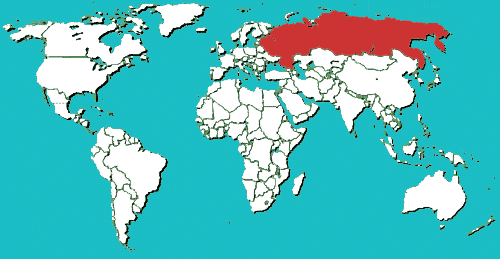
Circle the area on this map

D. A bog is a type of wetland that accumulates acidic peat, a deposit of dead plant material. Bogs are widely distributed in cold, temperate climes, mostly in the northern hemisphere.
B. Russia is the world's top producer of oil and natural gas. It has the world's largest proved reserves of natural gas, second largest coal reserves and fifth largest oil reserves. The United States produces the most nuclear power and China produces the most coal.
C. Canada is second with 3,855,102 square miles, followed by the United States, China, Brazil and Australia.
A. The Russian Federation was formed after the dissolution of the Soviet Union on Dec. 26, 1991. Russia was the largest of the fifteen republics that made up the Soviet Union, accounting for over 60 percent of the economy and over 50 percent of its population.